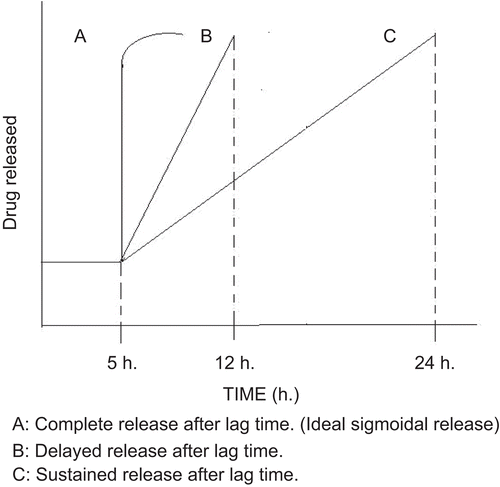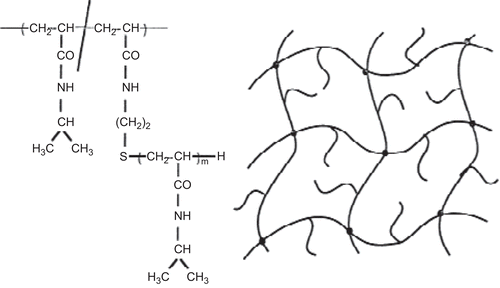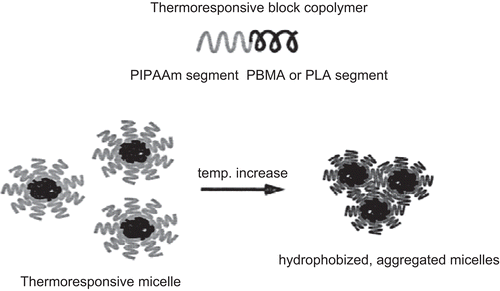Figures & data
Figure 5. Hypothetical design and plasma drug profile of a multi-particulate PDDS. (a) Design of a pellet with multiple coatings, (b) Predicted bi-modal plasma concentration profile.
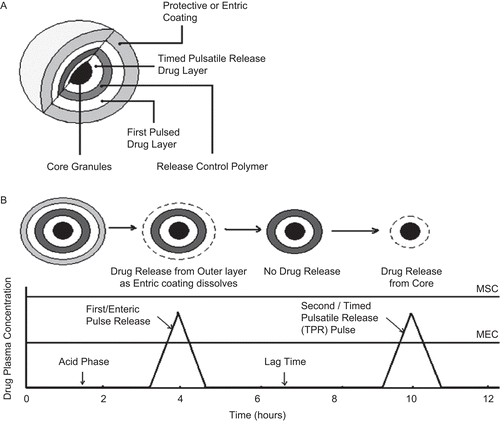
Figure 8. On–off release regulation of adriamycin from PIPAAm–PBMA micelles and PIPAAm–PST micelles in response to temperature switching at 4 and 40°C.
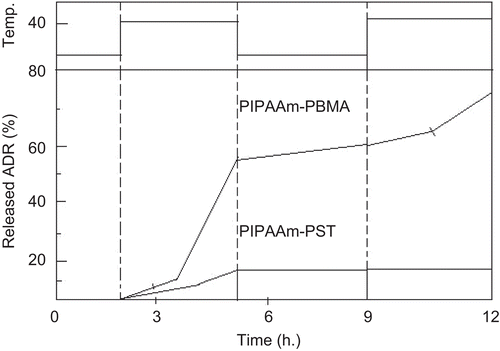
Figure 9. (a) Equilibria for alkylamidephenylboronic acid. (b) Repeated on–off release of FITC–insulin from PIPAAm–acrylamidephenylboronic acid copolymer gel beads at 28°C, pH 9.0 in response to external glucose concentration changes.

Table 1. Diseases requiring PDDS.
Table 2. Marketed technologies of PDDS.
